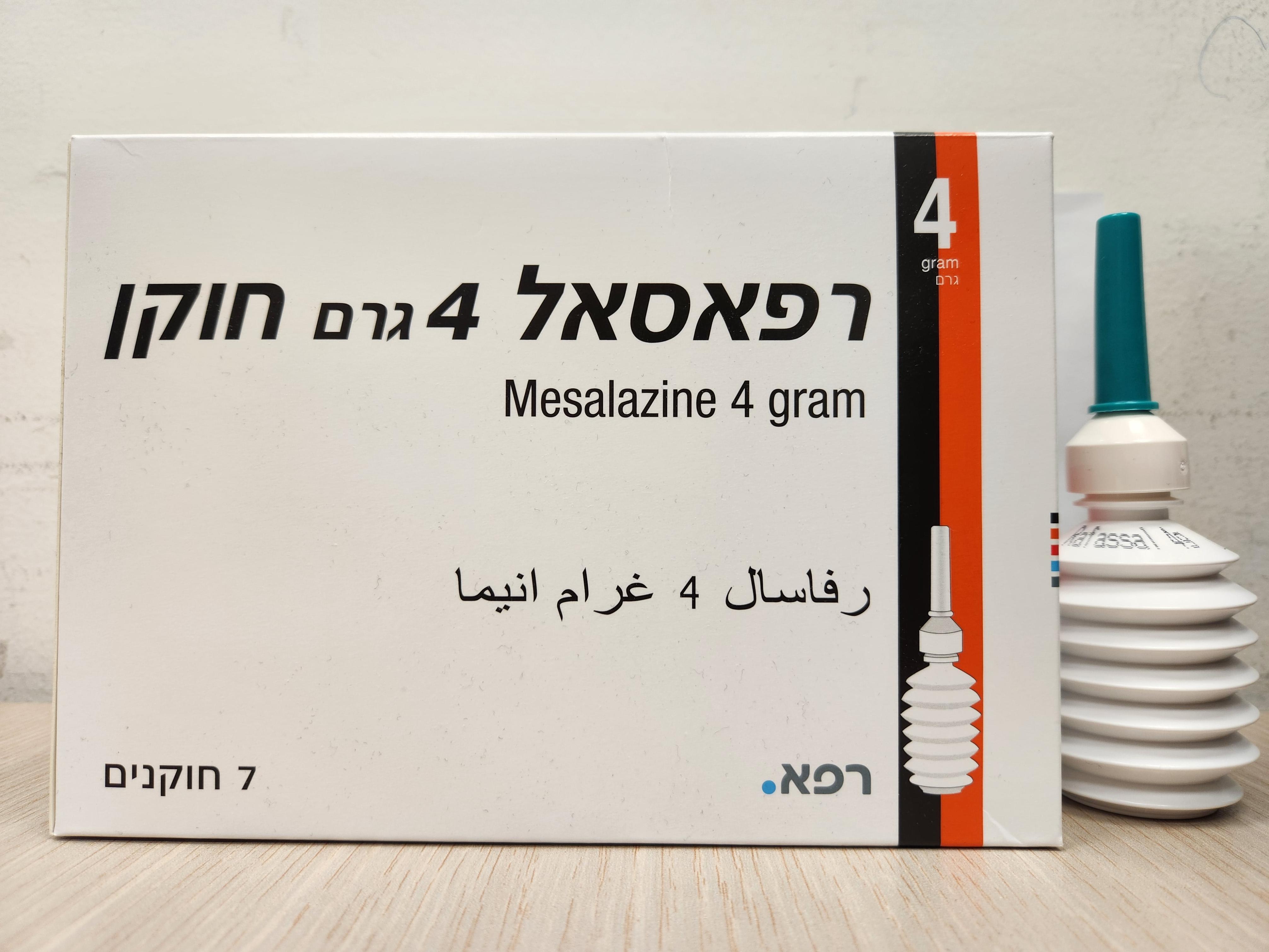Quest for the right Drug

ראפאסאל 4 חוקן גרם RAFASSAL 4 GRAM ENEMA (MESALAZINE)
תרופה במרשם
תרופה בסל
נרקוטיקה
ציטוטוקסיקה
צורת מתן:
רקטלי : RECTAL
צורת מינון:
חוקן : ENEMA
עלון לרופא
מינוניםPosology התוויות
Indications תופעות לוואי
Adverse reactions התוויות נגד
Contraindications אינטראקציות
Interactions מינון יתר
Overdose הריון/הנקה
Pregnancy & Lactation אוכלוסיות מיוחדות
Special populations תכונות פרמקולוגיות
Pharmacological properties מידע רוקחי
Pharmaceutical particulars אזהרת שימוש
Special Warning עלון לרופא
Physicians Leaflet
Pregnancy & Lactation : הריון/הנקה
4.6 Fertility, pregnancy and lactation Pregnancy There are no adequate data from the use of mesalazine in pregnant women. However, data on a limited number of exposed pregnancies indicate no adverse effect of mesalazine on the pregnancy or on the health of the fetus/newborn child. To date no other relevant epidemiologic data are available. In one single case after long-term use of a high dose mesalazine (2-4g, orally) during pregnancy, renal failure in a neonate was reported. Animal studies on oral mesalazine do not indicate direct or indirect harmful effects with respect to pregnancy, embryonic/fetal development, parturition or postnatal development. Rafassal Enemas should only be used during pregnancy if the potential benefit outweighs the possible risk. Lactation (breastfeeding) N-acetyl-5-aminosalicylic acid and to a lesser degree mesalazine are excreted in breast milk. Only limited experience with mesalazine during lactation in women is available to date. Hypersensitivity reactions such as diarrhoea in the infant cannot be excluded. Therefore, Rafassal Enemas should only be used during breast-feeding if the potential benefit outweighs the possible risk. If the infant develops diarrhoea, breast- feeding should be discontinued.

שימוש לפי פנקס קופ''ח כללית 1994
Maintenance of remission in ulcerative colitis, acute episodes of Crohn's disease
תאריך הכללה מקורי בסל
01/01/1995
הגבלות
תרופה שאושרה לשימוש כללי בקופ'ח
מידע נוסף
